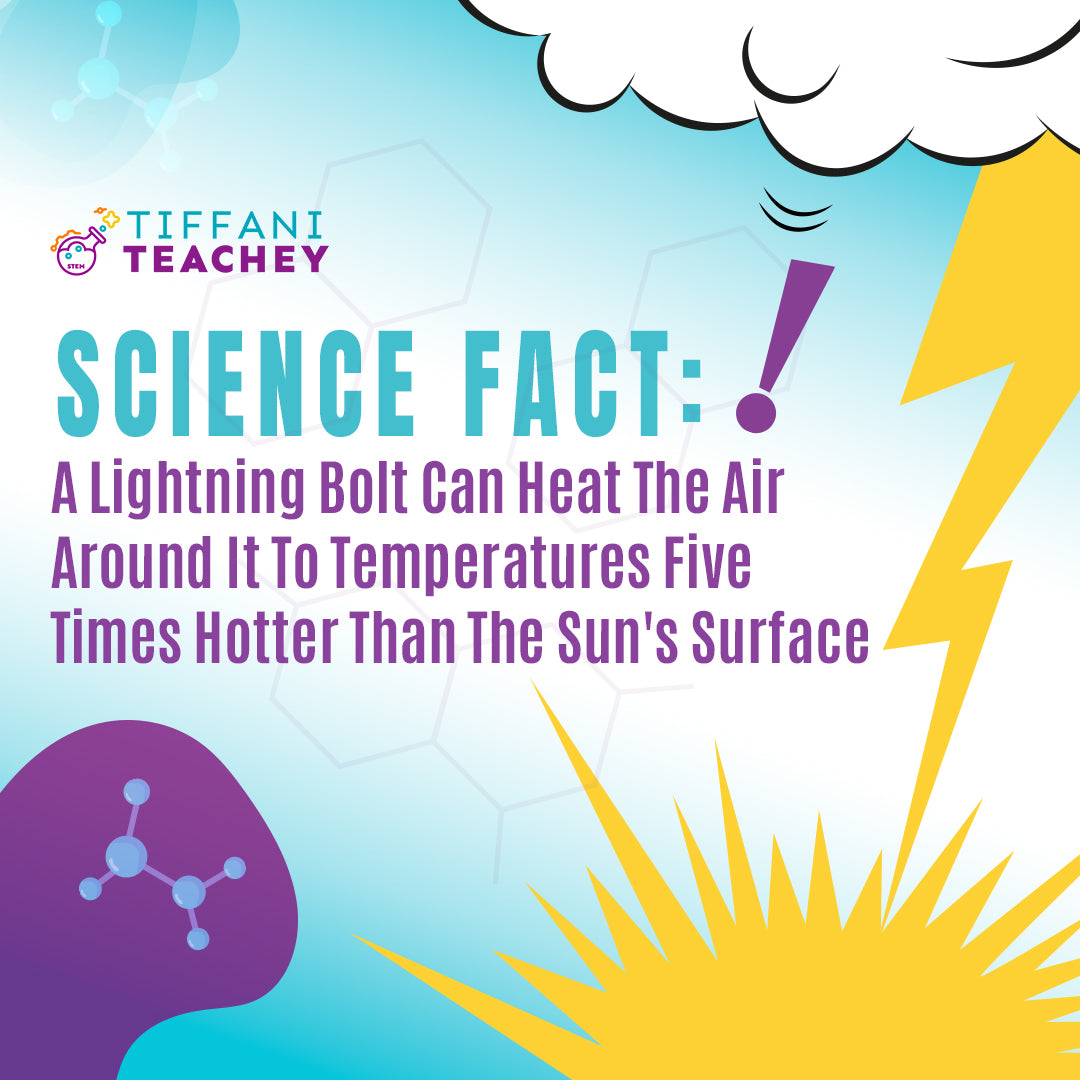
Science fact: A lightning bolt can heat the air around it to temperatures five times hotter than the sun's surface.
Share
Lightning is a powerful natural phenomenon that is caused by the buildup and discharge of electrical energy in the atmosphere. When lightning strikes, it can heat the air around it to incredibly high temperatures, often exceeding 30,000 Kelvin (53,540 degrees Fahrenheit).
To put that into perspective, the surface of the sun, which is the hottest object in our solar system, has a temperature of around 5,500 Kelvin (9,932 degrees Fahrenheit). This means that the air around a lightning bolt can be up to five times hotter than the sun's surface!
The intense heat generated by lightning is due to the rapid movement of electrons through the air. As the electrical charge builds up in the atmosphere, it creates an electric field that causes a flow of electrons from the ground to the clouds. When the electrons meet, they create a spark that ionizes the air molecules, generating intense heat and light.
The heat generated by a lightning bolt is enough to vaporize water, melt metal, and start fires. In fact, lightning is one of the leading causes of wildfires, as the heat generated by a strike can ignite dry vegetation.
Despite the immense power and heat generated by lightning, it is also a fascinating and beautiful natural phenomenon. From the stunning displays of lightning in thunderstorms to the unique shapes and colors of lightning bolts, this awe-inspiring phenomenon continues to captivate and amaze people all over the world.
Did you find this fact interesting? Drop a comment👇 and tag someone else who may also find this fascinating.
